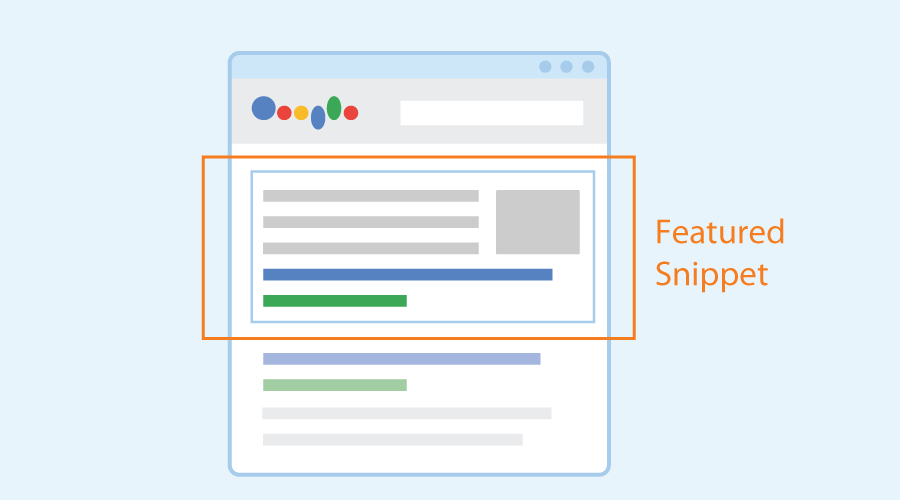SEO is no easy feat. But every so often, you stumble upon a sweet little shortcut—a game-changer that can give you a boost without requiring you to reinvent the wheel. Enter the Featured Snippet.
If you’re looking for a way to climb to the top of Google’s search results, grabbing a Featured Snippet is the SEO equivalent of hitting the jackpot. It’s the section that often appears at the very top of search results, above the usual organic listings. It gives your site prime real estate, more clicks, and most importantly—visibility. Plus, it’s one of the low-hanging fruits in SEO that doesn’t require you to have an elaborate, complex strategy.
So, how do you optimise for Featured Snippets and grab that coveted spot? Let’s dive in and explore how you can make Featured Snippets work for you—and why you should care.
What is a Featured Snippet, Anyway?
If you’ve ever searched for something on Google and noticed a nice, concise answer at the top of the search results—usually in a box, a list, or a table—you’ve seen a Featured Snippet. It’s often referred to as Position 0 because it appears before all organic search results, essentially giving it the highest visibility.
Featured Snippets can come in a few different forms:
- Paragraph Snippets: A concise summary answer to a question, usually in a few sentences.
- List Snippets: A bulleted or numbered list of information.
- Table Snippets: Information presented in a table format, typically when the query is related to comparisons or data.
These snippets are a huge opportunity to stand out, build authority, and increase traffic. So, how do you get your content to show up there?
Why Featured Snippets Matter for SEO
Getting your content to appear in a Featured Snippet isn’t just about visibility. There are serious benefits for your SEO:
- Increased Click-Through Rates (CTR): Featured Snippets can drastically increase your CTR, as they capture the user’s attention right at the top of the page.
- Voice Search Compatibility: Featured Snippets are often pulled by voice assistants like Google Assistant, Siri, and Alexa. If you’re in a Featured Snippet, your chances of being the voice search result increase significantly.
- Brand Authority: Being in the coveted Position 0 can help you establish your site as an authority, particularly in your niche.
- Less Competition: While the organic search results may have pages vying for position, Position 0 only has one slot, making it a prime target with less competition.
So, how do you optimise your content to dominate the Featured Snippet space? Let’s break it down.
How to Optimise for Featured Snippets: A Simple Guide
✅ 1. Identify the Right Keywords
Before you get all excited and start editing your content, you need to find the right keywords to target. Not all searches trigger Featured Snippets, so it’s crucial to zero in on queries that have a high likelihood of showing one.
- Use tools like Ahrefs or SEMrush to identify questions and search queries that have the potential to trigger Featured Snippets.
- Focus on long-tail keywords and questions. Queries that start with “How, “What is,” “Why does,” or “Best way to” are ripe for Featured Snippets.
- Check for questions: Look at search results for your target keywords. If you see a Featured Snippet already, it means Google is pulling answers for that query.
✅ 2. Create Concise, Clear, and Structured Content
Once you’ve found your target keywords, it’s time to optimise your content. Google loves direct answers—the clearer and more structured your response, the better. Here’s what you need to do:
- Answer the question upfront: Featured Snippets usually pull content that answers the search query in the first paragraph. If your content starts with a concise answer to the question, Google’s more likely to feature it.
- Use bullet points, numbered lists, or tables: When applicable, present your content in an easy-to-digest format. Google loves to pull structured data, so if you’re answering a “How-to” query, break your steps down in a numbered list.
- Keep it simple: Featured Snippets typically display around 40-60 words for paragraph-style snippets. So, be sure to keep your answer short, direct, and to the point. For lists or tables, keep your points concise.
✅ 3. Target “Position 0” by Optimising for Clarity and Readability
Your content needs to not only answer the query but also be written in a way that’s easy to understand for both users and search engines.
- Use clear headers (H2s, H3s): Make your content scannable. Include relevant headings, especially if you’re breaking down your content into steps or sections. For instance, if you’re answering a “How-to” question, a numbered list with a header is golden.
- Use natural language: Write your answers in natural, conversational language. Think about how someone would phrase the question out loud. This can help you get picked up for voice search as well.
- Implement the “answer box” structure: This involves positioning the most relevant answer within the first 40-60 words in a short paragraph. Make sure it answers the question directly and succinctly.
✅ 4. Optimise for User Intent
Google’s goal is to provide relevant answers to user queries, so your content must align with user intent. What are users looking for when they search for a particular term? Are they looking for an in-depth guide, a quick fact, or a step-by-step tutorial?
- Match your content format to the search intent. If the user is looking for a how-to guide, use a step-by-step format. If they want a comparison, make sure your page includes relevant tables or lists.
- Use tools like Answer the Public to see what kind of questions people are asking in your niche, then create content around those queries.
- Focus on semantic relevance: The language and phrases you use should align with how users phrase their questions.
✅ 5. Leverage Structured Data (Schema Markup)
While not all Featured Snippets rely on structured data, rich snippets do, and sometimes Google uses schema to pull Featured Snippets. Adding schema markup to your content gives Google more context about your page and can help you show up in other special features like rich results or knowledge panels.
- How-to Schema: If you’re writing a guide, use the How-To Schema to help Google understand the steps involved in your process.
- FAQ Schema: If your page answers multiple questions, add FAQ Schema to provide structured answers for Google’s algorithms to pull.
- Review Schema: Adding ratings or reviews to your content could help it show up in review-rich snippets.
✅ 6. Monitor and Adjust
After optimising your content, it’s time to keep an eye on your results. The Featured Snippet landscape can shift over time, so you need to continuously monitor your rankings and adjust your content where necessary.
- Track your rankings: Tools like Rank Tracker or Google Search Console can help you monitor if your page has captured a Featured Snippet and if your ranking improves.
- Refine your content: If your snippet is getting outranked, take a closer look at what’s working for others. You might need to tweak your wording, structure, or content length to outshine the competition.
The Power of Featured Snippets
Featured Snippets are a huge opportunity in SEO, offering businesses the chance to stand out, attract traffic, and ultimately build authority. It’s a shortcut to gaining top visibility without spending months climbing the search rankings. With the right strategy—focusing on keyword research, answering questions clearly, and optimising for structured data—you can start landing these snippets and giving your SEO efforts a major boost.
Featured Snippets are low-hanging fruit if you know how to optimise for them, so put these steps into action and start seeing your content in that prime Position 0 today.
Need help with your SEO strategy? RS Digital specialises in helping businesses secure Featured Snippets and enhance their overall SEO. Reach out to us for a consultation and let’s get your content in front of the right audience.
Contact us today through www.RSDigital.co.uk enquiry form or call 01282 452096.




